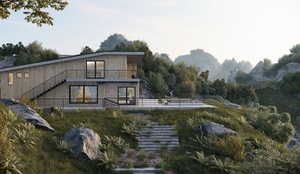More from Bella Virtual Staging USA
More in Politics
Related Blogs
Archives
Social Share
How Architectural Visualization Transforms the Design Process
Body
This is where architectural rendering visualization comes into play. It bridges the gap between an architect’s imagination and a client’s understanding, providing a tangible preview of the final product.
In the realm of architecture and design, the emergence of architectural visualization has revolutionized the way professionals conceptualize, develop, and communicate their ideas. This powerful tool transcends traditional methods, fostering a deeper understanding of spatial design and enabling stakeholders to engage with projects in unprecedented ways. By harnessing the capabilities of advanced technology, architectural visualization has become an indispensable asset in the design process, offering myriad benefits that extend from conception to completion.
The Impact of 3D Visualization
The inception of 3D architectural visualization has ushered in a new era of design representation, facilitating the creation of immersive, lifelike depictions of spaces that were once confined to 2D drawings and blueprints. This transformative shift allows architects, designers, and clients to experience architectural concepts in a tangible and interactive manner, thereby fostering enhanced spatial comprehension and informed decision-making. Through 3D visualization, intricate details, materials, lighting, and spatial relationships are brought to life, empowering all involved parties to visualize the end product with remarkable clarity. As a result, potential design flaws can be identified and rectified early in the process, leading to more refined and purposeful architectural solutions.
Virtual Reality (VR) and Augmented Reality (AR)
Virtual reality and augmented reality are revolutionizing architectural visualization. VR allows clients to immerse themselves in a virtual environment, experiencing the design as if they were physically present. AR overlays digital information onto the real world, enabling clients to visualize design elements in their actual context. These technologies provide a unique and engaging way to experience architectural designs.
Enhancing Communication and Collaboration
Architectural visualization serves as a universal language that transcends barriers, enabling seamless communication and collaboration among diverse stakeholders. By presenting design concepts in a visually compelling and easily digestible format, complex architectural ideas are effectively communicated to clients, investors, and project teams. This fosters a shared understanding and alignment of vision, thereby mitigating misunderstandings and facilitating constructive dialogue. Through this improved communication, decisions can be made with greater confidence, and modifications can be implemented with clarity and precision, ultimately streamlining the design process and enhancing project efficiency.

Empowering Creative Exploration
The dynamic nature of architectural visualization empowers architects and designers to explore a wide spectrum of design possibilities with unparalleled freedom and flexibility. By leveraging advanced digital tools, professionals are able to experiment with various styles, configurations, and design elements, helping them to refine their vision and articulate design concepts with artistic finesse. Furthermore, the ability to swiftly iterate and visualize different options allows for a more thorough exploration of design alternatives, thereby stimulating creativity and catalyzing innovative solutions that may have otherwise gone unexplored.
Facilitating Client Engagement
Architectural visualization serves as a bridge between imagination and reality, enabling clients to engage with and contribute to the design process in a profoundly impactful manner. By presenting evocative renderings and immersive virtual walkthroughs, clients are provided with a tangible preview of the end result, fostering a sense of ownership and emotional connection to the proposed design. This heightened engagement allows for client feedback to be more informed and constructive, facilitating a collaborative partnership between the design team and the client, which ultimately leads to designs that are more aligned with the client's vision and expectations.
Streamlining Decision-Making Process
The vivid and detailed visualizations offered by architectural visualization significantly streamline the decision-making process by providing stakeholders with the necessary tools to make informed choices. By accurately depicting design elements, materials, finishes, and spatial layouts, architectural visualization empowers clients and project teams to evaluate and approve design aspects with confidence, thereby minimizing costly changes and delays during the construction phase. Moreover, the ability to visualize multiple design options side-by-side allows for more efficient decision-making, leading to designs that are meticulously tailored to meet the project's objectives and requirements.
Conclusion
In conclusion, architectural visualization has emerged as a transformative force in the design process, revolutionizing the way architectural concepts are conceived, communicated, and realized. Its ability to bring designs to life in vivid, immersive, and interactive formats has redefined the standard for design representation and has fundamentally altered the dynamics of collaboration, decision-making, and creative exploration within the architectural and design industry. As technology continues to advance, the role of architectural visualization in shaping the future of architecture and design will undoubtedly continue to evolve, solidifying its position as an indispensable asset in the creation of exceptional architectural experiences.













Comments